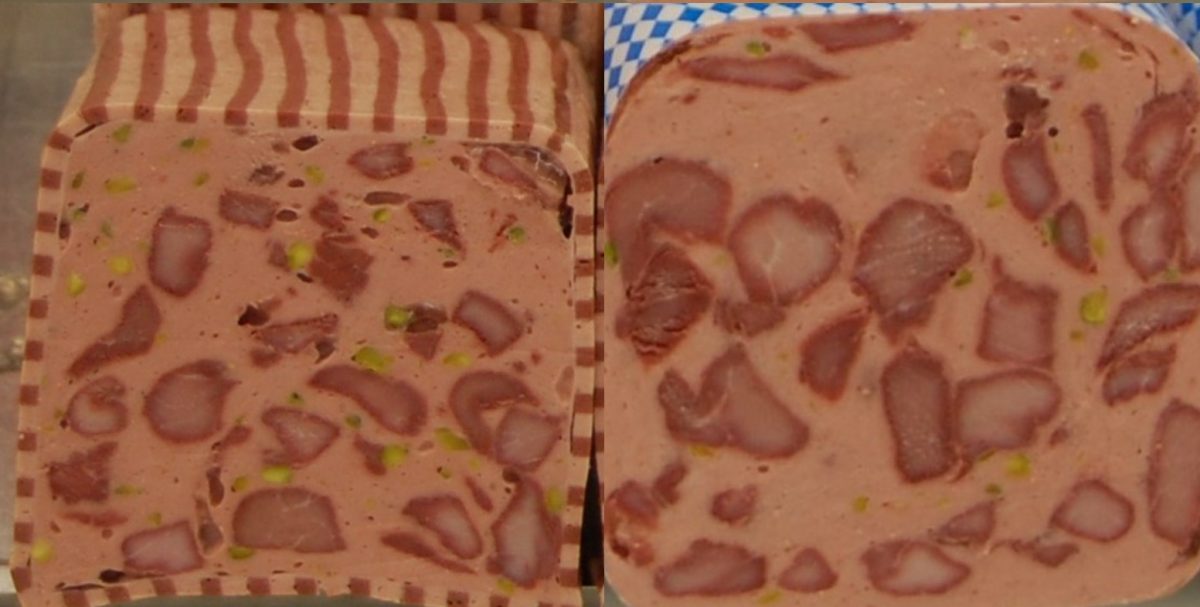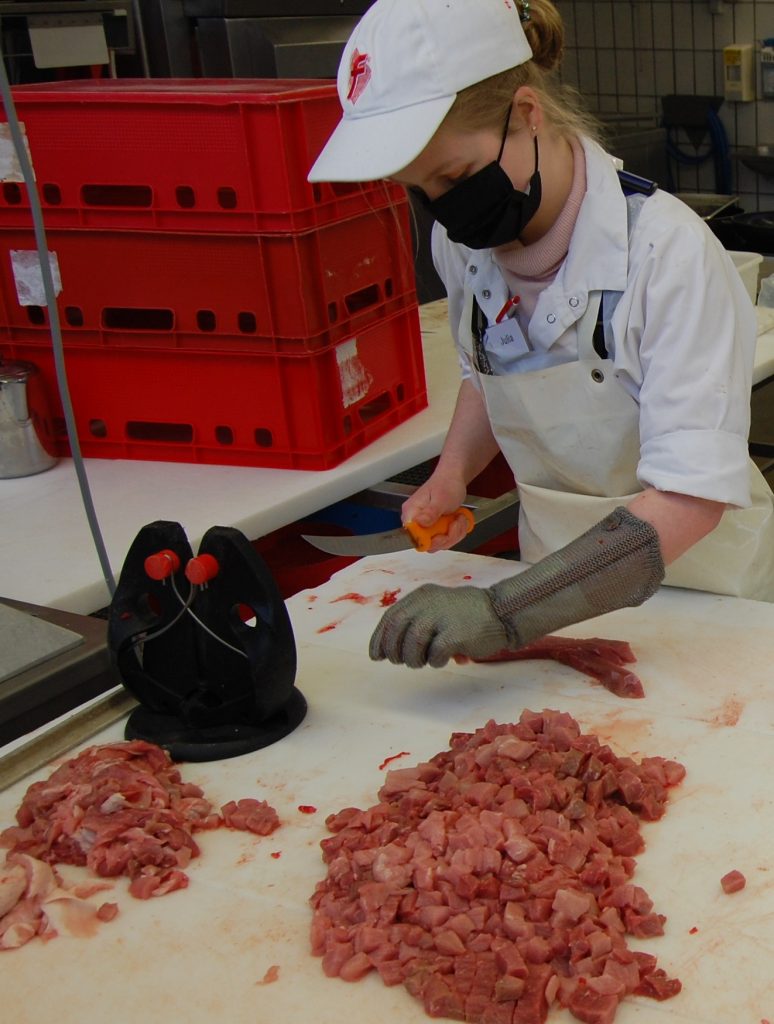
Einlagewürfel schneiden
cutting cubes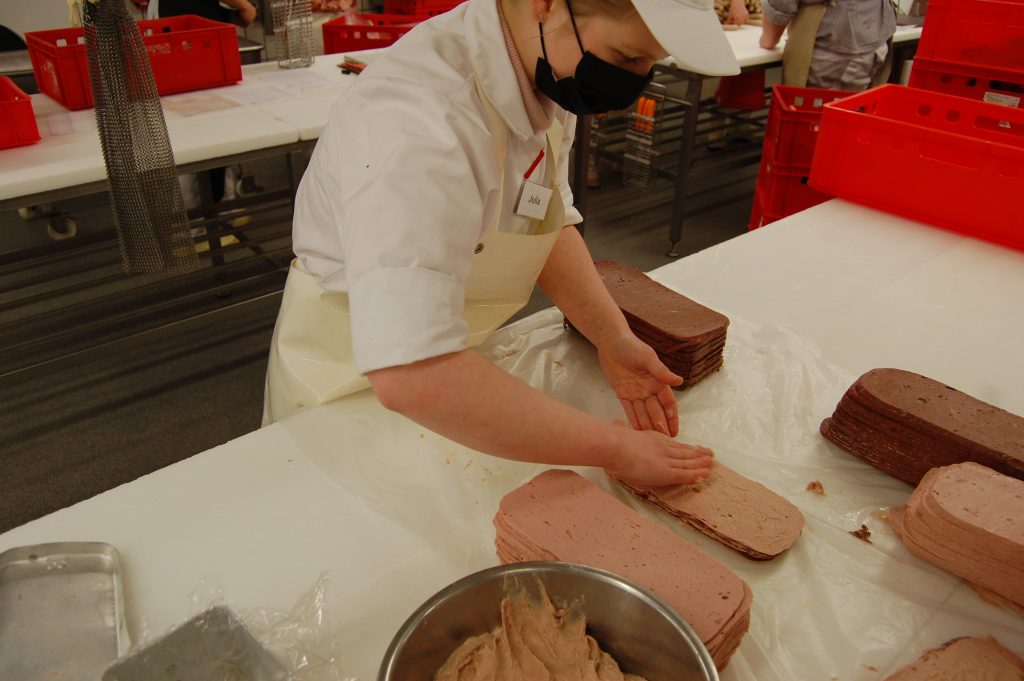
Mosaikrand herstellen
producing mosaic edges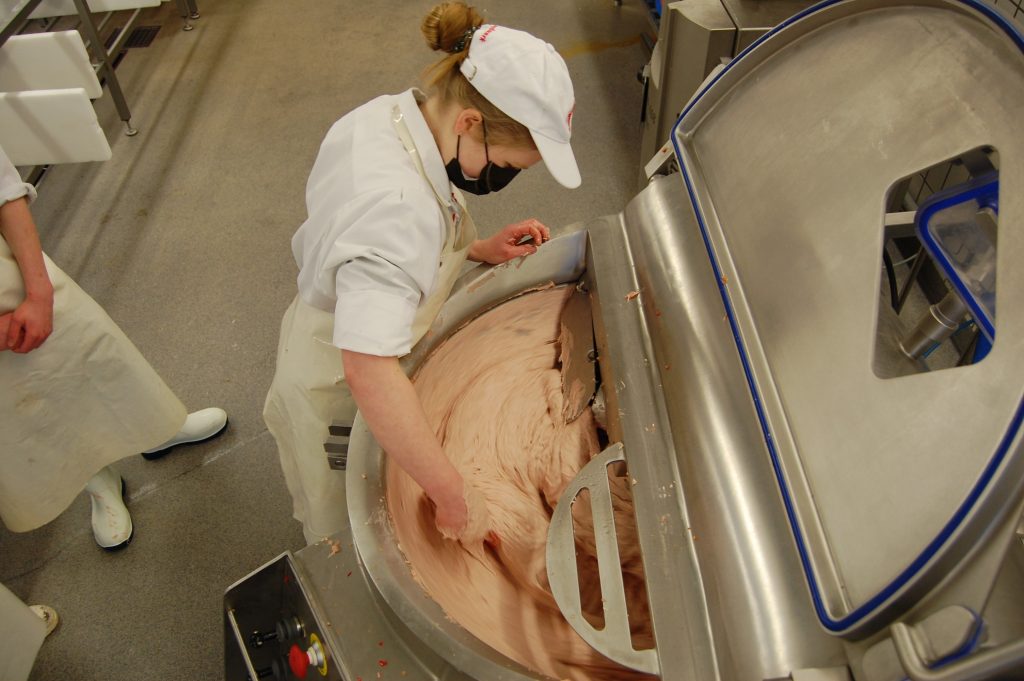
Brät herstellen
producing sausage meat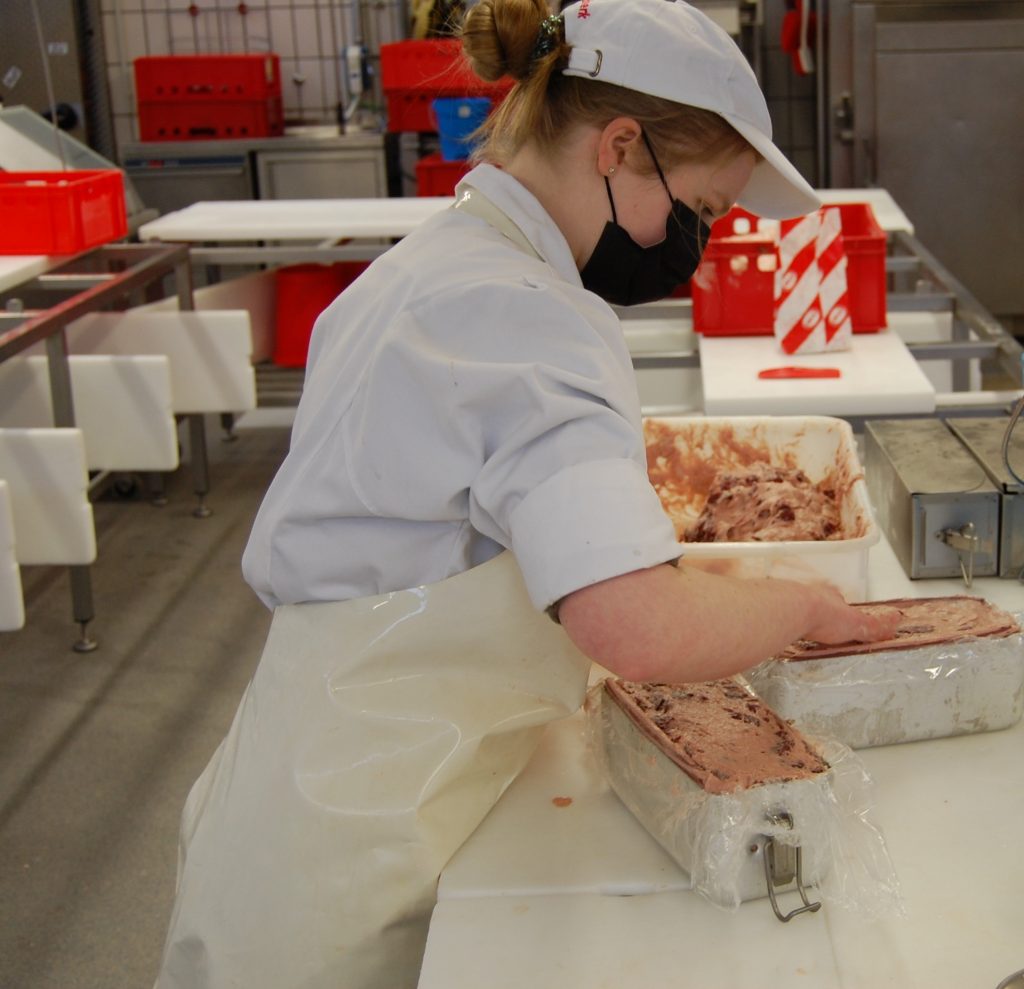
Imitierte Wildschweinpastete mit Mosaikrand fertig stellen
Finishing imitierte Wildschweinpastete with mosaic edges
Wie stellt man einen Mosaikrand her? Das habe ich mich schon immer gefragt. Deshalb habe ich meinen Ausbilder bei der überbetrieblichen Lehrlingsunterweisung in Travemünde gefragt, ob er das nicht zeigen könnte. Daraufhin haben wir eine imitierte Wildschweinpastete mit Mosaikrand hergestellt. Eine ganze Woche Arbeit.
Welche Schritte nötig sind, um die imitierte Wildscheinpastete mit Mosaikrand herzustellen erfahrt ihr im Folgenden:
- Montag: Einlagewürfel schneiden
- mit Salz, Gewürzen und Blut versehen
- vakuumieren
- 2 Tage im Kühlraum umröten lassen
- Dienstag: helles und dunkles Brät herstellen
- helles Brät in eine Pastetenform füllen
- dunkles (mit Blut eingefärbtes Brät) in eine Pastetenform füllen
- Brühen
- Mittwoch: Mosaikrand herstellen
- helle und dunkle Pastete mit der Aufschnittmaschine in Scheiben schneiden
- Scheiben mit Brät einreiben und abwechselnd aufeinanderlegen
- Stapel erneut in die Pastetenform legen
- Brühen
- Donnerstag: imitierte Wildschweinpastete mit Mosaikrand fertigstellen
- Pastete für Mosaikrand aus Pastetenform nehmen und in Scheiben schneiden
- Pastetenform mit Rand auslegen
- helles Aufschnittbrät herstellen
- Einlagewürfel bindig mengen
- Einlagewürfel mit Brät und Pistazien vermengen
- Brät in die vorbereitete Pastetenform füllen
- Brühen
- Freitag: Pastete anschneiden
- Ergebnis beurteilen
- verkosten
Ganz schön viel Arbeit. Vor allem der Mosaikrand beansprucht einen Großteil der Arbeitszeit. Fällt dieser Weg, wie auf dem Bild auf der rechten Seite gleicht der Herstellungsprozess, dem eines Bierschinkens und ist erheblich weniger zeitaufwendig.
Pasteten mit Mosaikrand findet man heutzutage selten bis gar nicht mehr in den Ladentheken der Metzgereien. Hergestellt werden diese meist als Prüfungs- oder Wettbewerbsleistungen.
Der Aufwand für die Herstellung steht nicht mehr in Relation zum Ertrag. Das „teuerste“ im Herstellungsprozess ist die Arbeitszeit. Bei angemessener Entlohnung ist der Kilo-Preis für eine Pastete mit Mosaikrand (Bild links) bei handwerklicher Herstellung/ Einzelfertigung mindestens doppelt so hoch wie bei einer Pastete ohne Mosaikrand (Bild rechts).
Würdet ihr diesen Preisunterschied auf euch nehmen und für die bessere Optik das doppelte bezahlen?
Mosaic edges
How is a mosaic edge produced? I was wondering how this works. That`s why I asked my teacher at the vocational training for butchers in Travemünde if he can show us how to do it. So we produced a `imitierte Wildschweinpastete´ with mosaic edges (picture on the left side). An entire week of work.
`Imitierte Wildschweinpastete´ is a pâté with cubes of meat which look like they are from wild boar, but they are from the pig just coloured with blood to reach a darker colour.
I am going to explain you in the following how to produce a pâté with mosaic edges:
- Monday: cutting cubes
- mix them with salt, spices and blood
- vacuum-packing
- reddening in the cold room for 2 days
- Tuesday: producing light and dark sausage meat
- filling light sausage meat in a pâté mould
- filling dark (coloured with blood) sausage meat in a pâté mould
- boiling
- Wednesday: producing mosaic edges
- cutting light and dark pâtés in slices
- rubbing the slices with sausage meat and stacking them up
- putting the stack in a pâté mould again
- boiling
- Thursday: finishing the `imitierte Wildschweinpastete´ with mosaic edges
- taking the pâté for the mosaic edge out of the mould and cutting it in slices
- putting mosaic edge in the mould
- producing light sausage meat
- mixing cubes until they get sticky
- combining cubes, sausage meat and pistachios
- filling everything in the pâte mould
- boiling
- Friday: cutting pâté in half
- evaluating the result
- tasting
A lot of work. Especially the mosaic edge demands a great amount of working time. The production process without mosaic edge, like at the picture on the right side, is the same you need for producing `Bierschinken.´
Pâtés with mosaic edge are rarely or not at all found in the counter of a butcher shop. They are only produced for exams or competition.
The cost-income ratio is not profitable. Working time is the `most expensive´ during the production process. The kilo price for a pâté with mosaic edge (picture on the left side) produced in a little butcher shop/ individual production has to be twice the price of a pâté without mosaic edge (picture on the right side) by appropriate remuneration.
Would you accept this price difference and pay double for the better optics?

